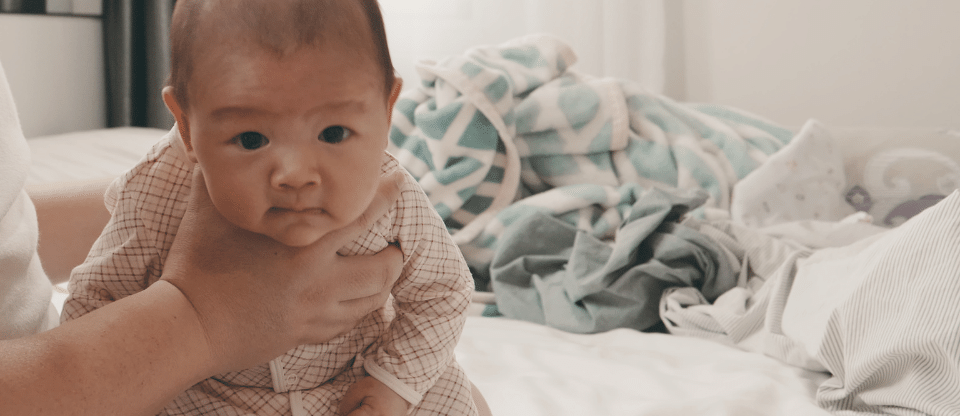You will be familiar with the phrase ‘better out than in’ and this is the case when it comes to winding your baby. To avoid your baby feeling restless they may require some help as they are not always able to burp themselves.
How to burp a baby
You may need to try a few positions before you find the most suitable way to wind your baby. As a general guide, remember to:
- Keep your baby’s stomach and spine straight, not rounded
- Support their head and neck at all times
- Rub their back gently
Winding positions to try
- Hold your baby upright with their tummy against your chest and their chin on your shoulder, all the while supporting the head and shoulder area with one hand as you gently rub your baby’s back with your other hand.
- Lay your baby across your legs in a face-down position. Support their chin (being careful to avoid putting pressure on the throat) and gently rub your baby’s back with your other hand.
- Sit your baby on your knee facing away from you, with the palm of one hand supporting their chest, chin, and jaw (without putting any pressure on the throat). Lean your baby forward slightly as you rub their back with your free hand.
Top Tip: When winding your baby it is a good idea to place a clean muslin square or bib under their mouth, in case your baby brings up a little milk, which is common and nothing to worry about.
When to Burp Your Baby
Either part way through a feed or at the end take a few minutes for winding but as a general rule, if your little one seems unsettled or restless during a feed, it might be time for a little wind break. Make sure you get between 3 to 4 good burps with each winding. However, if your baby doesn’t bring up trapped air bubbles after your helpful attempts of a few minutes, it probably means there is no need to continue with the process.
Please remember that every baby is different. If your baby seems happy feeding, don’t worry about interrupting them.
Signs of trapped wind can include:
- Crying
- Arching of the back
- Pulling legs up towards the tummy
- Clenching fists.
Before long you’ll probably get a good idea of when and how often your baby needs winding, so you won’t even have to wait for signs of trapped wind as it will become second nature.
When do you stop winding a baby?
In the early days, a baby’s immature digestive system can cause a lot of discomfort. The good news is that by around 3 months of age, the digestive system will be better developed and won’t require winding as often.
What happens if your baby doesn’t burp?
If you think that your baby is still uncomfortable after several minutes of trying to wind them, you could try giving them a warm bath to help relax them. After the bath, give your baby a gentle tummy massage by softly rubbing your hands over the tummy in a clockwise and circular motion to help release any trapped wind.
If after attempting to help ease your baby's trapped air bubbles, your baby is still upset, there may be something else wrong. Double-check to make sure they aren’t still hungry, don’t have a dirty nappy or are feeling unwell.
If you still have any concerns about your baby being uncomfortable after feeds, ask your health visitor for some advice and guidance.
Related Blogs:
How can I tell if my baby has colic?
My Baby cries after feeding: What’s wrong?


